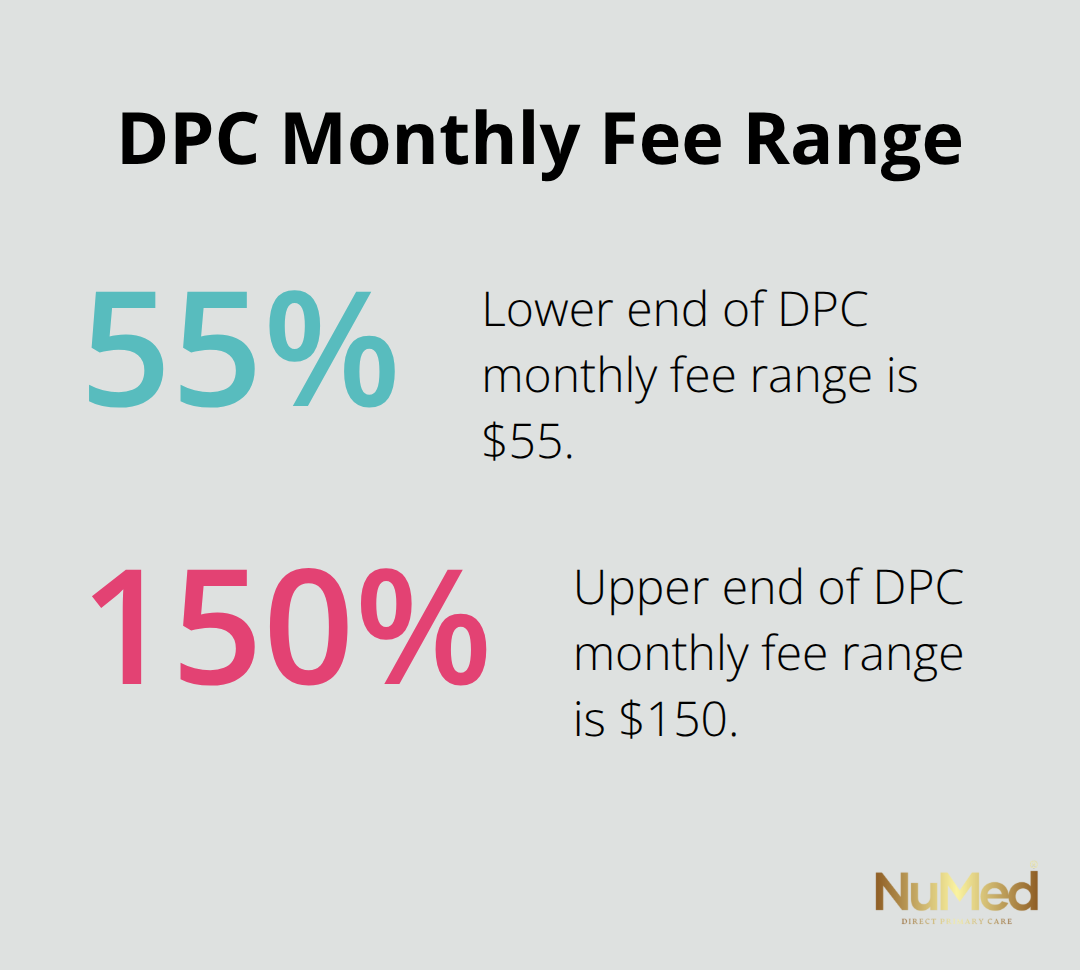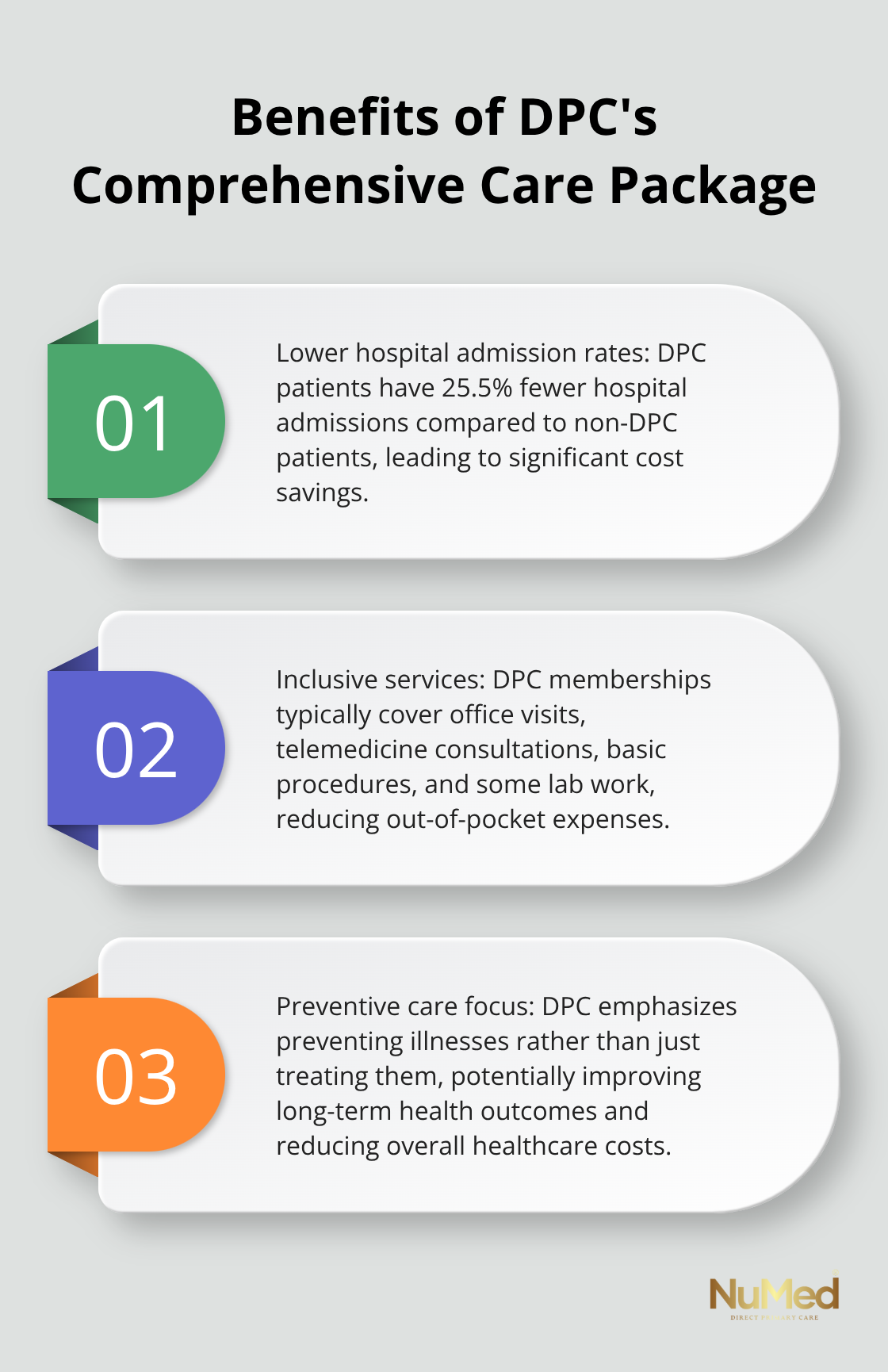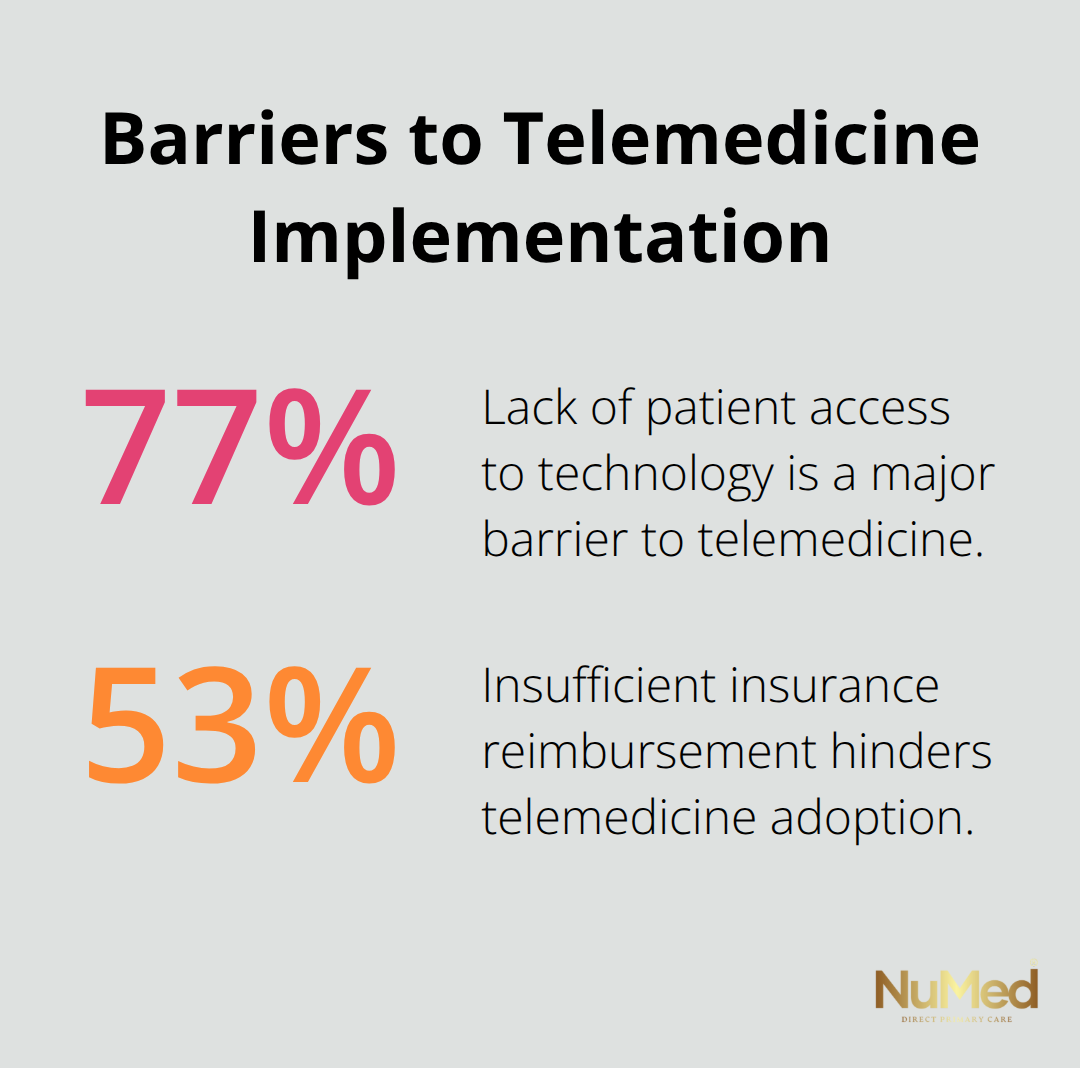Healthcare access remains a challenge for many Americans. At NuMed DPC, we believe Direct Primary Care (DPC) is the solution to break down these barriers.
DPC offers a revolutionary approach to healthcare delivery, prioritizing patient-centered care and affordability. This blog post explores how DPC is making quality healthcare accessible to all, regardless of financial constraints or insurance status.
What Is Direct Primary Care?
A Revolutionary Healthcare Model
Direct Primary Care (DPC) revolutionizes healthcare delivery by eliminating insurance companies from primary care. Patients pay a monthly or annual fee directly to their healthcare provider, which covers most primary care services, including office visits, telemedicine, and basic procedures.
Patient-Centered Approach
DPC transforms the traditional healthcare model. While conventional doctors often see 25-30 patients daily with 15-minute appointments, DPC physicians maintain a smaller patient panel. This reduction allows for longer appointments and same-day or next-day scheduling, putting patients at the center of care.
Transparent Pricing Structure
One of DPC’s key advantages is its clear pricing structure. Monthly fees typically range from $55 to $150 (depending on age and location), covering all or most primary care services. This transparency helps patients budget for their healthcare needs without unexpected costs.

Comprehensive Care Package
DPC practices often offer extensive services as part of their care package. These may include lab services, functional medicine approaches, and health coaching. This comprehensive approach addresses patients’ health needs holistically, promoting overall well-being.
Benefits for Patients and Providers
DPC offers significant advantages for both patients and healthcare providers:
For Patients:
- Improved access to care
- More time with their doctor
- Potential cost savings
For Providers:
- More time practicing medicine
- Less time on paperwork
- Greater job satisfaction
Focus on Preventive Care
DPC emphasizes preventing illnesses rather than just treating them. Many DPC practices focus on addressing root causes of health issues through functional medicine approaches. This proactive stance on health can lead to better long-term outcomes and reduced healthcare costs.
As we explore how DPC breaks down financial barriers to healthcare, it’s important to understand how this model’s pricing structure and comprehensive care approach contribute to making quality healthcare more accessible.
How DPC Makes Healthcare Affordable
Transparent Pricing Structure
Direct Primary Care (DPC) practices typically charge a monthly membership fee that covers most primary care services. This fee structure eliminates the uncertainty of copays, deductibles, and surprise bills. A study published in the Journal of the American Board of Family Medicine found that DPC membership fees generally range from $77 to $150 per month for adults. This predictable cost allows patients to budget for their healthcare expenses effectively.
Cutting Out the Middleman
DPC reduces costs by eliminating insurance companies from primary care transactions. This direct patient-doctor relationship removes administrative overhead associated with insurance billing. The American Academy of Family Physicians reports that primary care practices spend an average of $99,000 per year interacting with insurance companies. DPC practices avoid these costs and offer more affordable care to patients.
Comprehensive Care Package
Most DPC memberships include a wide range of services (office visits, telemedicine consultations, basic procedures, and some lab work). This comprehensive approach leads to significant savings. A study in the American Journal of Managed Care found that DPC patients had 25.5% lower hospital admission rates compared to non-DPC patients. Lower hospitalization rates translate to reduced healthcare costs for patients.

Flexible Payment Options
Many DPC practices offer flexible payment options to ensure accessibility. Some practices provide family discounts, reducing the per-person cost for households. Others offer sliding scale fees based on income, making care more affordable for those with financial constraints. DPC practices work with patients to find a payment plan that fits their budget, ensuring that financial concerns don’t prevent access to quality care.
Cost-Effective Prescriptions and Labs
DPC practices often negotiate directly with labs and wholesalers to secure lower prices for medications and tests. A cross-sectional study compared 2024 costs for neurologic medications between commercial insurance plans and an online, generic-only pharmacy. This direct approach to pricing can lead to substantial savings for patients, especially those managing chronic conditions that require ongoing medication.
DPC’s innovative approach to healthcare financing removes many of the cost barriers that prevent people from accessing quality primary care. The next section will explore how DPC expands access to comprehensive care, further breaking down barriers to healthcare.
How DPC Expands Access to Comprehensive Care
Extended Appointment Times
Direct Primary Care (DPC) practices revolutionize patient care by offering longer appointment times. While traditional doctors often limit visits to 15 minutes, DPC physicians dedicate time for thorough examinations, in-depth health discussions, and personalized care plans.
A recent study investigated the relationships between primary care appointment rates and their determinants, including workforce composition and other factors. This research highlights the importance of understanding how appointment structures impact patient care.
Prompt Appointment Scheduling
DPC practices excel at providing quick access to medical care. Many offer same-day or next-day scheduling, significantly reducing wait times for patients. This rapid access proves particularly beneficial for addressing acute health issues before they escalate into more serious problems.
Telemedicine Integration
DPC practices have embraced telemedicine, incorporating remote consultations into their comprehensive care packages. This option proves invaluable for patients with mobility issues, those in rural areas, or individuals with busy schedules.
However, a recent study identified several barriers to telemedicine implementation. The top reported challenges include lack of patient access to technology (77.6%) and insufficient insurance reimbursement (53.5%). These findings highlight the ongoing challenges in expanding telemedicine services.

Comprehensive Care Approach
DPC practices adopt a holistic approach to patient care. They often provide a wide array of services under one roof, including basic procedures, lab work, and preventive care screenings. This comprehensive model eliminates the need for patients to navigate multiple healthcare providers for routine care.
Patient-Centered Communication
DPC emphasizes open and frequent communication between patients and their healthcare providers. Many practices offer a direct relationship with their primary care physician and improved access to the needed services and treatment. This continuous line of communication fosters a strong doctor-patient relationship and ensures that patients receive timely advice and support.
Final Thoughts
Direct Primary Care (DPC) revolutionizes healthcare access by prioritizing patient-centered care and affordability. DPC eliminates insurance middlemen, provides transparent pricing, and offers comprehensive care packages, making quality healthcare accessible to all. The future of healthcare delivery looks promising with the DPC model, as more patients and providers recognize its benefits.
DPC’s emphasis on preventive care and addressing root causes of health issues aligns with the growing focus on holistic wellness. DPC practices foster strong doctor-patient relationships and provide ample time for thorough examinations and discussions. The integration of telemedicine within DPC practices further expands access to care, particularly for those in rural areas or with mobility challenges.
We encourage you to explore DPC options in your area for a more personalized and accessible healthcare experience. At NuMed Direct Primary Care, we offer compassionate and holistic healthcare that focuses on preventing illness and fostering a personalized connection between patient and practitioner. Our comprehensive approach includes extensive lab services, functional medicine, and health coaching, all tailored to your unique needs (without insurance complications).
















